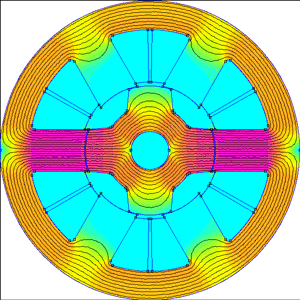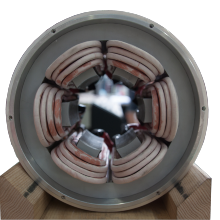The first switched reluctance machine (SRM) was built in 1839 by Robert Davidson. Its functional principle is based on the reluctance force acting between the stator and rotor poles with the aim of minimizing reluctance in the magnetic circuit. At the time, the SRM could not prevail over the DC machine because of the simple mechanical commutation nor over the rotating field machines due to the possibility of mains operation. Only with the development of power semiconductors and microprocessors, which enable electrical commutation of the current, did SRM come back into focus.

The biggest advantage of the SRM is the mechanically simple and robust construction, which is reflected in low production costs and low maintenance. Since no permanent magnets or windings are required on the rotor, the SRM is suitable for high speed applications. Another advantage of the simple rotor is the lower heat generation. Thus, the heat is mainly generated in the stator, which simplifies the cooling effort. The simpler thermal management and the absence of temperature-sensitive materials such as permanent magnets allow the SRM to be overloaded for a short period of time.
In applications such as electric vehicles, this could prove to be an advantage, as high torques are required intermittently to accelerate the vehicle. In order to test the usability of the SRM in electric mobility, the IEW Institute is developing an SRM for the E-Kart Model B as part of the "StudKart" project.
The biggest challenge of SRM is to generate a constant torque. The reason for this is the unusual torque characteristic, which is caused by the highly utilized operation in saturation and the direction-independent string torque. In order to achieve a low torque ripple, machine-specific, saturation-dependent and speed-dependent current curves must be impressed in the individual strings. The torque ripple of the SRM can be reduced to tolerable values by design measures and special control strategies.
Main topics at IEW:
- Application-specific design of the entire drive system
- Design using Pareto front-based optimization methods
- Modeling of the switched reluctance machine
- Development of new control strategies


